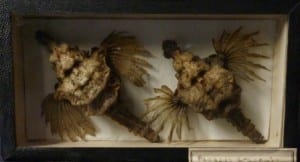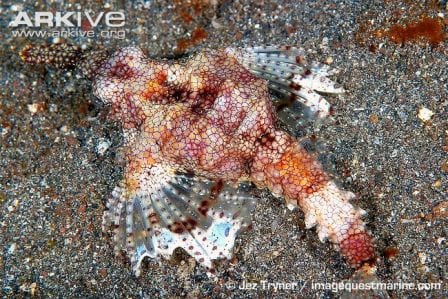Specimen of the Week: Week 128
By Emma-Louise Nicholls, on 24 March 2014
 Here at the Grant Museum we love all species of animal. We are not racist, sexist, size-ist, species-ist, or any such ist at all. It was not us that named this animal, but if it had been us who gave it this particular common name, it would have been through love and appreciation, and not meant in a derogatory way. For there is nothing wrong with being how this animal is described in its common name. Nothing at all. In fact, I can relate. Ok, caveat over, this week’s Specimen of the Week is…
Here at the Grant Museum we love all species of animal. We are not racist, sexist, size-ist, species-ist, or any such ist at all. It was not us that named this animal, but if it had been us who gave it this particular common name, it would have been through love and appreciation, and not meant in a derogatory way. For there is nothing wrong with being how this animal is described in its common name. Nothing at all. In fact, I can relate. Ok, caveat over, this week’s Specimen of the Week is…
**The short dragonfish**
1) Short dragonfish, also known as Pegasus sea moths, live in both marine and brackish (slighty salty) water environments. They particularly appreciate a good reef complex though. As Nemo the clownfish did (before he got lost and regretted it), scientists believe short dragonfish may leave the reefs and venture out into water depths of up to 91 m. So you’d probably need an advanced open water diving certificate and a lot of brass to see one.

The pair of short dragonfish (Eurypegasus draconis) at the Grant Museum. LDUCZ-V333 (C) UCL Grant Museum
2) Romantically, adult short dragonfish are commonly found in pairs, resting on the substrate together. Awww. Short dragonfish most commonly live in lagoonal areas where they hide amongst beds of seagrass, or on the sandy or silty substrates of bays and estuaries where they hunt along the substrate for invertebrates such as crustaceans and worms. The species lives in areas from the Indo-Pacific to the Red Sea, down to South Africa and north as far as southern Japan, plus Australia, and throughout Micronesia.

A short dragonfish attempting to become invisible against the substrate. © Jez Tryner / imagequestmarine.com
3) They can grow up to 10 cm in total body length. Unlike most fish, the short dragonfish lacks dorsal fins but has two large pectoral fins that splay out sideways from the body. They can vary immensely in colour, but the body is usually light to dark brown, with the back and sides darker than the underneath. The short dragonfish periodically sheds its skin in a single molt with a ‘jump’, leaving it in one piece, to rid themselves of debris.
4) Scientists believe that they are a monogamous species, albeit only seasonally. In captive experiments, individuals would pair for at least 22 days. It is possible that these pairings occur season after season, but it has not been confirmed and they may only occur for the duration of the breeding season. Spawning is thought to take place at dusk after the pair have traveled up through the water column together to release and fertilise the eggs.
5) The short dragonfish is not thought to be territorial, and nor does it get attached to particular sites. The potential long-term bonds of a male and female that mate repeatedly makes the short dragonfish vulnerable to over-fishing. So I guess let’s hope they aren’t monogamous creatures then. Sadly this species is exploited for both Traditional Chinese Medicine (TCM), and for the aquarium trade. I’m not sure about making medicine out of one, but as for pets- they sure are super cute*.
* Cute they may be, but I do not condone the exotic pet trade
Emma-Louise Nicholls is the Curatorial Assistant at the Grant Museum of Zoology
 Close
Close


